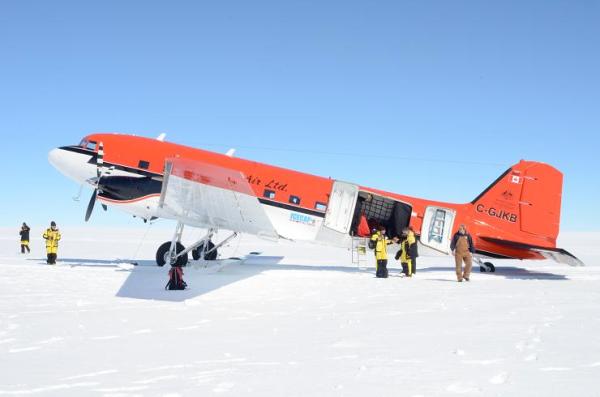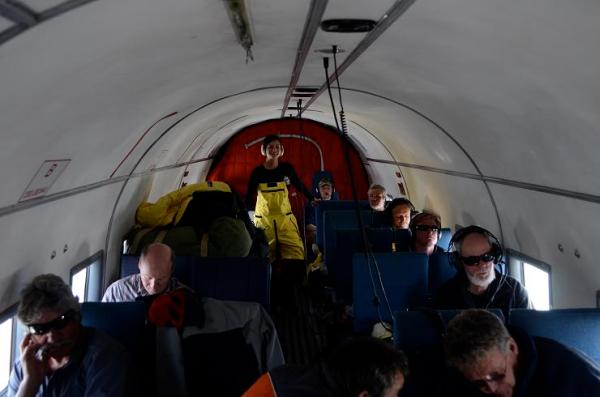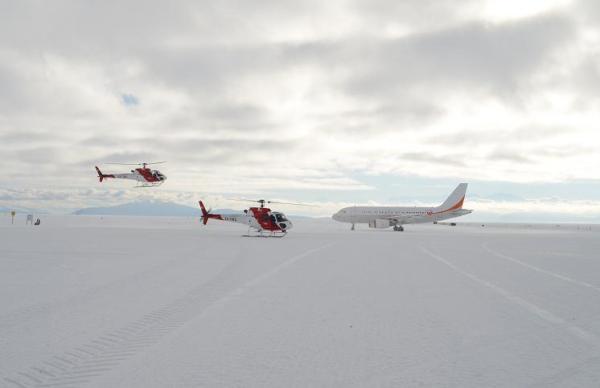
There have seen some superb insights into life in Antarctica, and into the lives of the polar heroes of the past, in a series of reports by ABC journalist Karen Barlow, accompanying the party that celebrated the 100th anniversary of the Douglas Mawson lead expedition to the seventh continent.
Among them there have also been glimpses of aviation in Antarctica.
These include the helicopter transfers from the ice breaker Aurora Australis to the site of Mawson’s huts at Commonwealth Bay, the transfer to the French base at Dumont d’Urville, and from there to McMurdo Sound by the Basler turbo-prop and ski-equipped version of the Douglas DC-3, shown at the top of this post, as well as below.

As well as the Basler photos there was an image of the Pegasus ice runway at McMurdo, which has in the earliest episodes of its illustrious history, been visited by Lockheed Constellations and Boeing Stratoclippers as well as in modern times by jets as large as Boeing 757s, C-17s, Ilyushin Il-76s and quite regularly the Australian Antarctic Division’s Airbus A319LR, even when the sun was barely up, and the area was in the grip of the southern polar winter.
The A319 has proven a superb addition to the multi-national air lift that serves McMurdo, although much of that is provided by an aged fleet of US ski-equipped C-130s via Christchurch, that fly beyond it to the South Pole, and its newly rebuilt Amundsen-Scott base, named after the south polar rivals Roald Amundsen and Robert Falcon Scott.
The smallish Airbus is shown in this photo below.

This season has been a bad one for logistical reasons for the Wilkins blue ice runway some 70 kilometres from the Australian base at Casey which was intended to be the prime focus of the jet, where it is the only aircraft not allowed to refuel, meaning it cannot use its maximum load capacity the way it does at the much more distant McMurdo strips.
Pressure is building for higher capacity air access to the vast region of Antarctica for which the Wilkins location is of particular relevance. Air transport will grow in that major part of Australia’s Antarctic Territory, with us, or without us.
It is nearly 33 polar days since the writer flew to the South Pole on a trip which also explored possible sites for an Australia-Casey air link, which included a return flight from McMurdo to nearby Lanyon Junction in a US C-130.







Crikey is committed to hosting lively discussions. Help us keep the conversation useful, interesting and welcoming. We aim to publish comments quickly in the interest of promoting robust conversation, but we’re a small team and we deploy filters to protect against legal risk. Occasionally your comment may be held up while we review, but we’re working as fast as we can to keep the conversation rolling.
The Crikey comment section is members-only content. Please subscribe to leave a comment.
The Crikey comment section is members-only content. Please login to leave a comment.